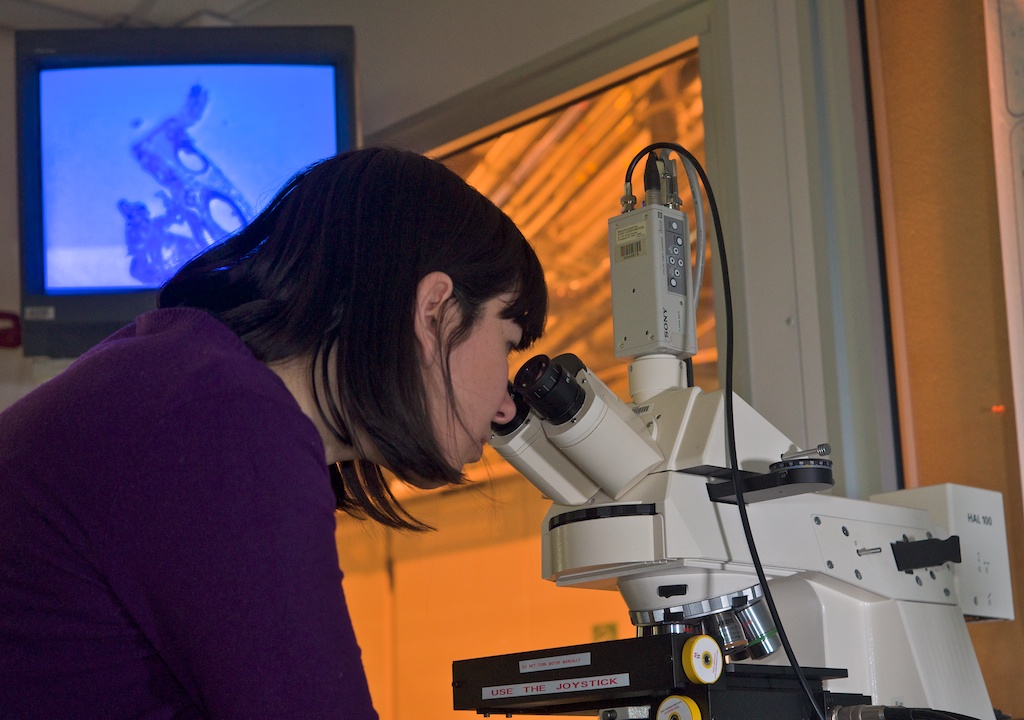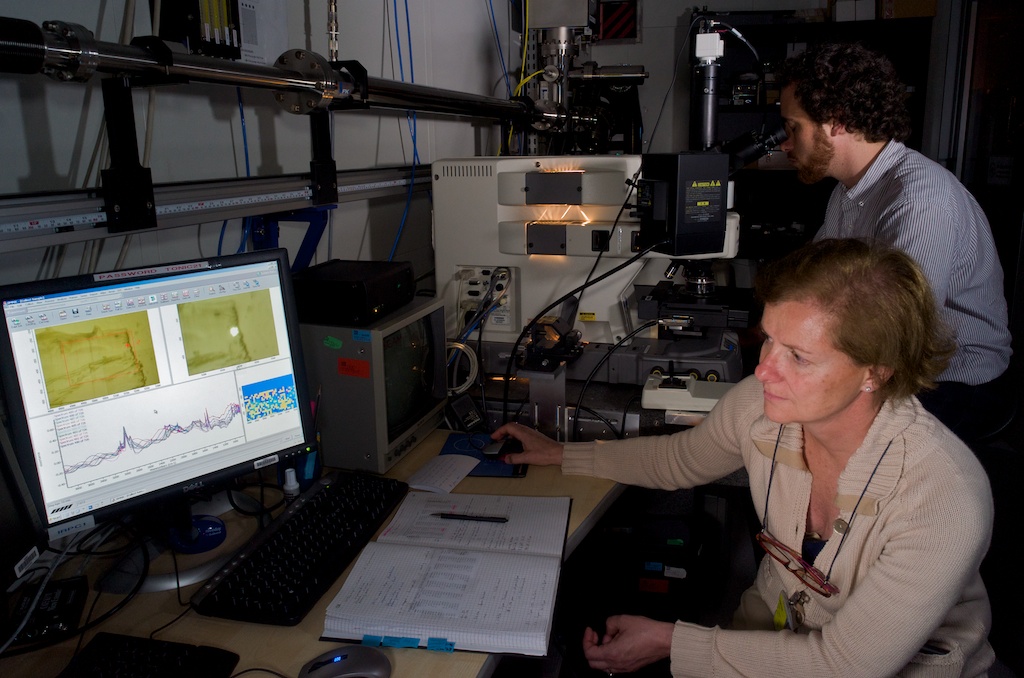- Home
- News
- General News
- Iconic 1960s ‘Grillo’...
Iconic 1960s ‘Grillo’ phone study helps preserve the past and ring changes for the future
24-09-2014
Iconic 1960s Italian design items including the first ‘Grillo’ phone to be made out of plastic and the famous E63 table lamp from a private collection have been studied at the European Synchrotron, the ESRF. Conservation Scientists are trying to work out how best to preserve the objects, which are subject to yellowing and cracking, but first they need to understand the processes at play when plastics degrade.
Using infrared microscopy at the ESRF a group from Milan have produced molecular maps of the historical plastics, showing how far underneath the surface deterioration occurs. They have identified degradation markers and observed, for the first time in historical samples, microscopic fibres of strengtheners used to harden the plastics. As well as helping to preserve museum pieces it is hoped that the knowledge will help inform the development of future plastics. The results are printed in the journal Analytica Chimica Acta. (16 September 2014).
Museum and private collections are full of artefacts made with plastics. Polymers have excellent properties and versatility and have therefore been, and continue to be, popular with designers, architects and artists. The downside is that plastics have a short life span and age in very different ways so it can be hard to pinpoint what is causing their degradation. Nevertheless, collectors need to find a way to preserve their treasured pieces, and future developers want to create more robust plastics, so the quest to find out is an important one.
A team from Politecnico di Milano and the Institute of Photonics and Nanotechnologies, Consiglio Nazionale delle Ricerche (CNR-IFN) in Milan, have used the intense beams of infrared light produced at the ESRF to look at sections of one of the many important polymers used in design, so called ABS (acrylonitrile-butadiene-styrene) plastic. Items made from ABS are found in collections within international museums but ABS is also within household items such as domestic appliances, some luggage and even musical instruments.

Daniela Saviello from the Politecnico di Milano working on the microtrome at ESRF's ID21beamline.
The group, led by Daniela Saviello from the Politecnico di Milano took fragments of the ABS plastic from the Grillo phone and the E63 table lamp and using ESRF’s ID21 infrared end-station, studied samples which had been artificially aged to conditions akin to 1000 hours of light exposure. They prepared thin transversal cross-sections rather than just surface fragments of ABS as in previous studies to see how deeply beneath the surface the damage from light exposure occurs.
They found that to a depth of 80 microns the plastic became almost fully degraded, whereas deeper within the plastic, the polymers were unaffected. Many plastics can completely disintegrate, but this shows that in this case, even though there can be chemical damage - in the form of the yellowing of the surface of the phone and the lamp in this case - the rest of the object can remain intact. Previously experiments of this kind have focused on the surface only, leading to the belief that the damage has occurred throughout the whole object.
Daniela Saviello said: “It is very important to understand what happens on the surface of the material and to evaluate the extent of degradation. Surface damage can be the starting point for severe damage as well and can affect the properties of the whole bulk causing irreversible changes to chemical properties. This can also include the migration of additives from the bulk to the surface. Such evaluation is possible only by carrying out analysis with high resolution techniques. Moreover, the surface analysis is a key point in the study of materials used in Cultural Heritage”.
In addition, the group found that one of the polymers had fibres of a corn protein added to the polymer during production – which was used in an effort to strengthen the plastic. This was an unexpected extra result that enables scientists to better understand the ingredients in the plastics used for 1960’s design objects.
Only with the high spatial resolution at ESRF was it possible to map the areas of sample where the microscopic protein fibres were included inside ABS.

Austin Nevin from CNR-IFN and Lucia Toniolo, working on the FTIR microscope
Austin Nevin from CNR-IFN said:
“The advantages of using the ESRF for this work are that it allows us to carry out spatially resolved analysis to see samples at the microscopic level. In addition the sample preparation lab on the ID21 beamline allowed us to carefully fine-tune our samples to achieve the most significant and useful chemical maps from tiny samples”.
The results add to a bank of knowledge on plastics that will allow conservationists to learn how to better protect and clean their artefacts and plastics manufacturers to understand more about the effectiveness of previous processes used to develop plastics.
More information can be found in the paper.
Top image: Objects in acrylonitrile–butadiene–styrene. (left) Grillo (Marco Zanuso and Richard Saper for Siemens), 1965 (right) E63 (Umberto Riva for Francesconi) 1963, private collection.



